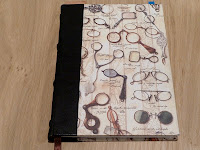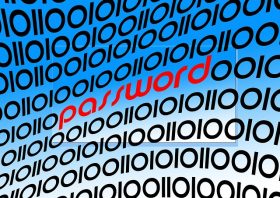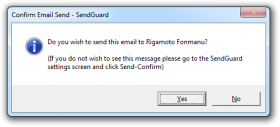Top tips from Mesmo Consultancy (and Associates) on how to save time and improve business and personal performance by ‘Taking Control of your Inbox’ and using proper business email etiquette.
Can pen and paper help stop email overload and reach inbox zero? Yes. No, I am neither mad nor suffering from the first stages of dementia. Keep a check today on how many times people ask you to do something (from arrange a meeting to join them for lunch):
 |
| My BomoArt Daybook |
Walking around any office, going to a meeting and I see most people with a notebook and pen in addition to all the technical gizmos. We seem to use the traditional writing tools for doodling (when the meeting is boring) and making our own personal notes but rarely for jotting down what someone has asked us to do. Why? One reason is because we want a record so we can play cover my backside. Many such emails are unnecessary and just drive up the email overload and hence reduce the chance of reaching inbox overload.
Email is just one of a multitude of communications and organisation tools one of which is the traditional notebook. Picking the right tool for the right purpose is key to saving time dealing with your email.
If you are serious about stopping email overload and reaching the inbox zero status quo, then next time someone asks you to do something, take ownership and make a note in your own day book. Don’t ask them to send you an email. It smacks of playing politics and laziness. Here is my beautiful day book (from BomoArt) which goes everywhere with me.
Tags: email management training, email overload, empty inbox, inbox zero, notebook stories
How good is your email security? Cyber crime is now a tier one priority for government and business. Sloppy use of email is one of the most common ways to leak important information and open the door for the cyber criminal.
Improving your email security is one of the first steps to managing the risk of a cyber attack.
Here is a summary of the top tips Dr Monica Seeley (Mesmo Consultancy) discussed on the Geoff Carter Show on HotRadio 102.8FM on Wednesday 04 April
For more email security tips like these subscribe to Mesmo Consultancy’s monthly ‘E-briefing.’ For your free review of your company’s Computer Acceptable Usage policy please contact us by phone on 01202 43 43 40 or email.
Tags: cyber crime, email security, password protection
What is the correct email etiquette protocol for emails received but not intended for you?
Here are some great tips from my felllow email expert, Sanjay Singh, President of Standss. Standss supply some excellent Outlook efficiency add ons.
(Sanjay originally published this on his own blog and I am most grateful to him for allowing me to reproduce it.)
Do you occasionally receive emails that were accidentally sent to you (maybe because your email address is very similar to someone else)? What should you do when this happens… and how can you avoid making this mistake yourself.
I recently saw an article on LifeHacker on this topic. Their recommendations were as follows.
My Recommendation
My preferred method for dealing with these emails is to, REPLY TO THE SENDERand let them know that they accidentally sent you the email. I do this because:
How to avoid making this mistake yourself
This mistake is very easy to make if you’re a Microsoft Outlook user. Outlook has an Auto-complete feature that completes email addresses as you type them in the To, CC or Bcc fields of emails. It is very easy to accidentally pick the wrong email address from this list.
We have covered how you can protect yourself in the past in:
Preventing Disasters caused by Outlook’s Autocomplete feature
For additional protection you may also want to look at Send Guard for Outlookwhich can prompt you for confirmation before any emails are sent out.

The prompt has the recipient’s name which can serve as an additional warning. (SendGuard users… you can turn this on using the Settings Screen and selecting the Send Confirm tab)
What do you do when you get misdirected emails? Do you forward it or reply… do you delete? Please share your own ideas by leaving a comment.
Tags: email overload
 |
| Email overload |
Do you want to reach inbox zero quickly after taking a few days out of the office? Then use your Out of Office message to stop post holiday email overload. Email overload always seems more pronounced after you come back from leave. What is more depressing and stressful than trawling your way through an over flowing inbox, only to find that many of the emails are redundant?
One very effective way is to use your Out of Office message to manage the senders expectation and make the sender prioritise what you really need to see. Simply set it to say something along these lines.
‘I’m not accessing my emails regularly between A and B. All messages during that period will be automatically deleted. If your message is urgent please call C. Otherwise if you still need me to see your email, please resend it to me on D.’
It is a form of email bankruptcy to which more and more business people are turning in order to stop the dreaded post email overload.
Tags: email overload, empty inbox, inbox zero, out-of-office messages
Email overload rules according to a new survey by Mircosoft. We spend more time dealing with email than socialising with friends and family. The survey revealed that on average we waste two hours a week dealing with ‘greymail’. That is email we don’t really need. Research by Mesmo Consultancy finds the time wasted to be a little higher – nearer five hours a day.
The average inbox receives about 14,6000 per year. Again we find it too be higher and nearer 22,630. Not clear whether or not the Microsoft data relates to business or social use of email. Nonetheless it underlines the need to deal swiftly with the whole email addiction and email overload syndrome.
To check how much time you are personally wasting use our Cost of Email Misuse Calculator
What is especially worrying is that many young people feel so stressed by email overload. It also conflicts with the view that social networking is taking over from email as the main communications channel.www.mesmo.co.uk
Over the years at Mesmo Consultancy have developed the Nine Ps of Smart Email Management Charter to help people reduce the email overload and email stress. Feel free to download it and use it.
If you need more help, why not call contact me about our Smart Email Management workshops and coaching sessions?
Tags: email best practice, email charter, email overload, Microsoft